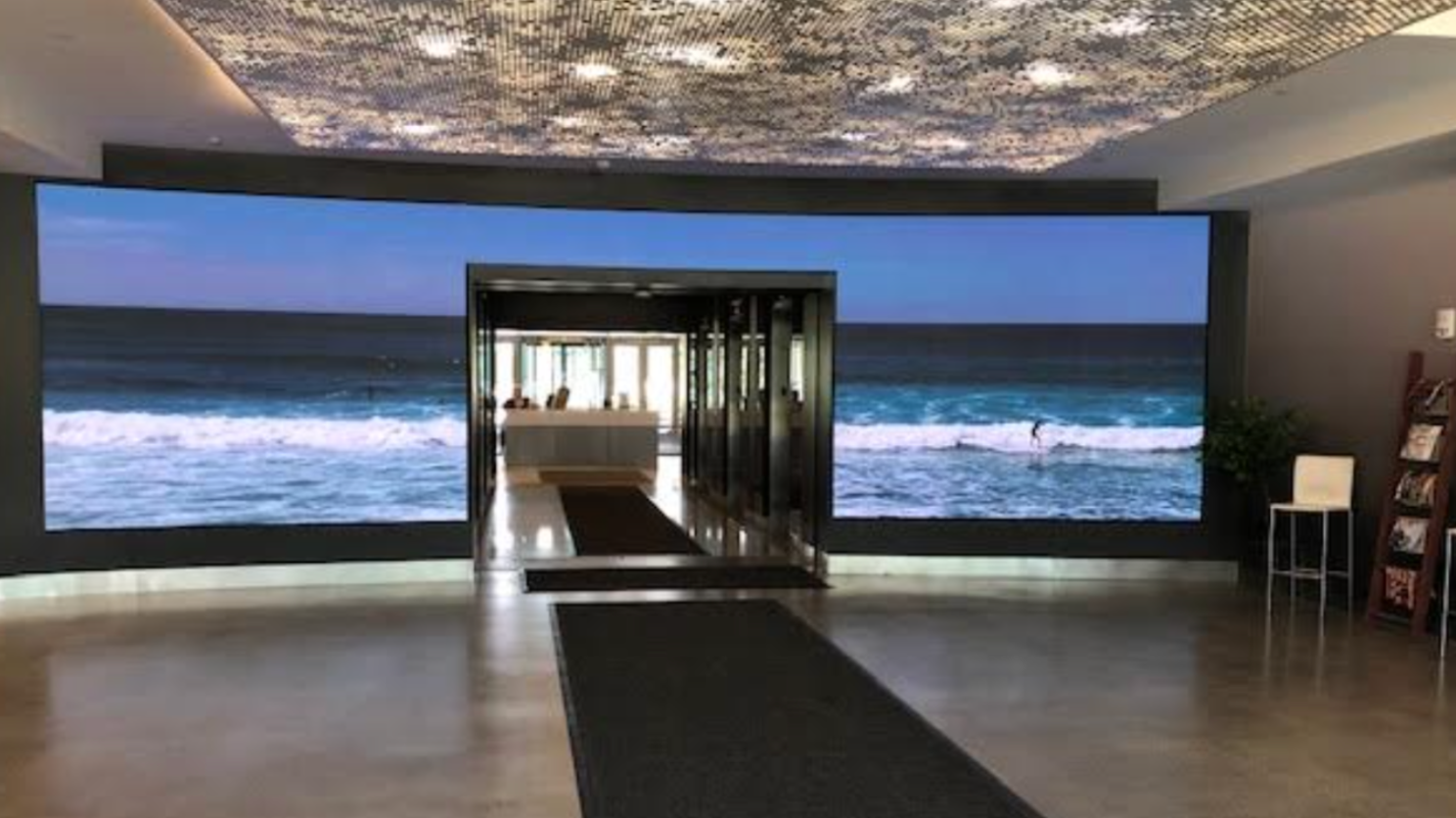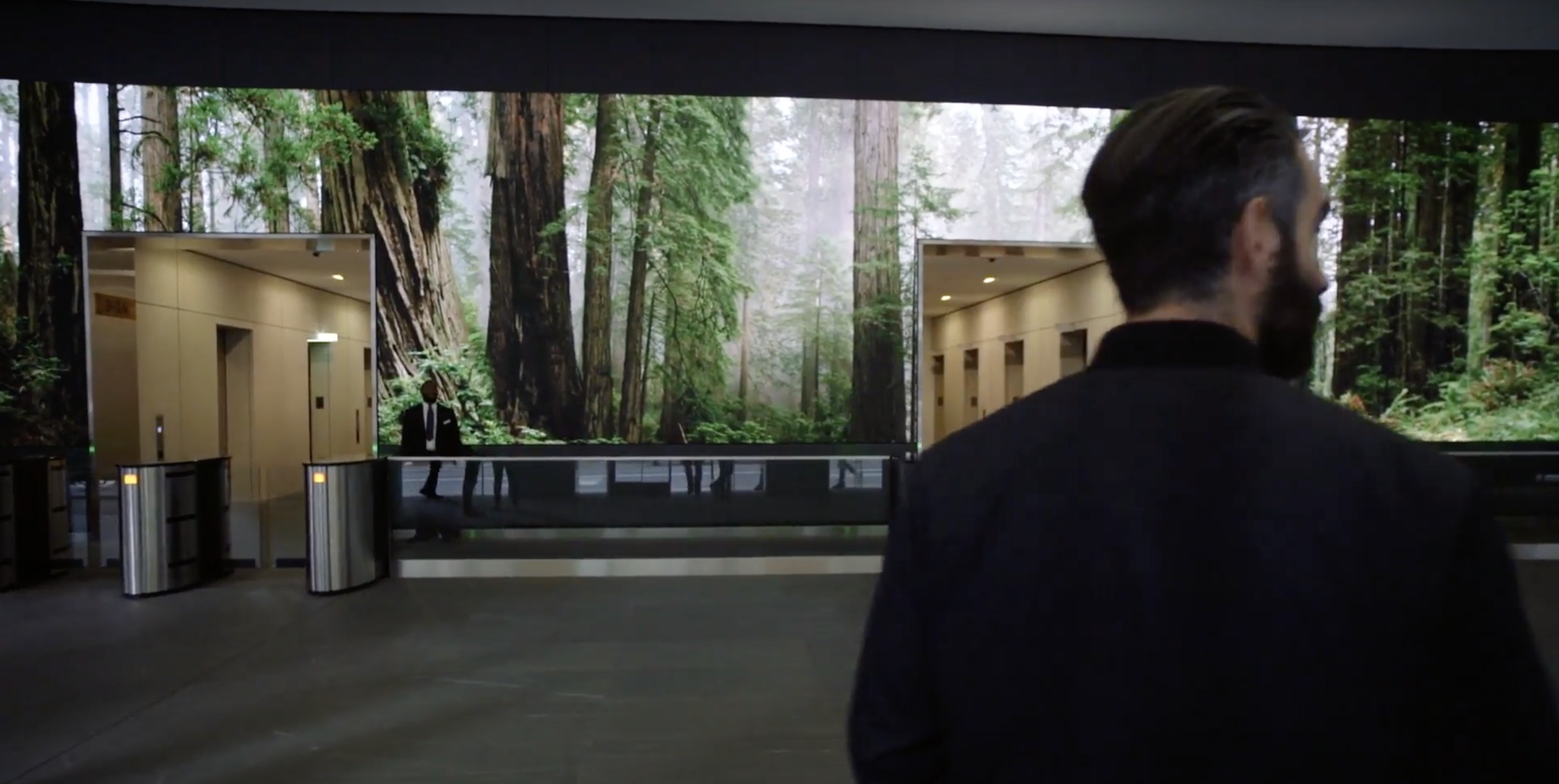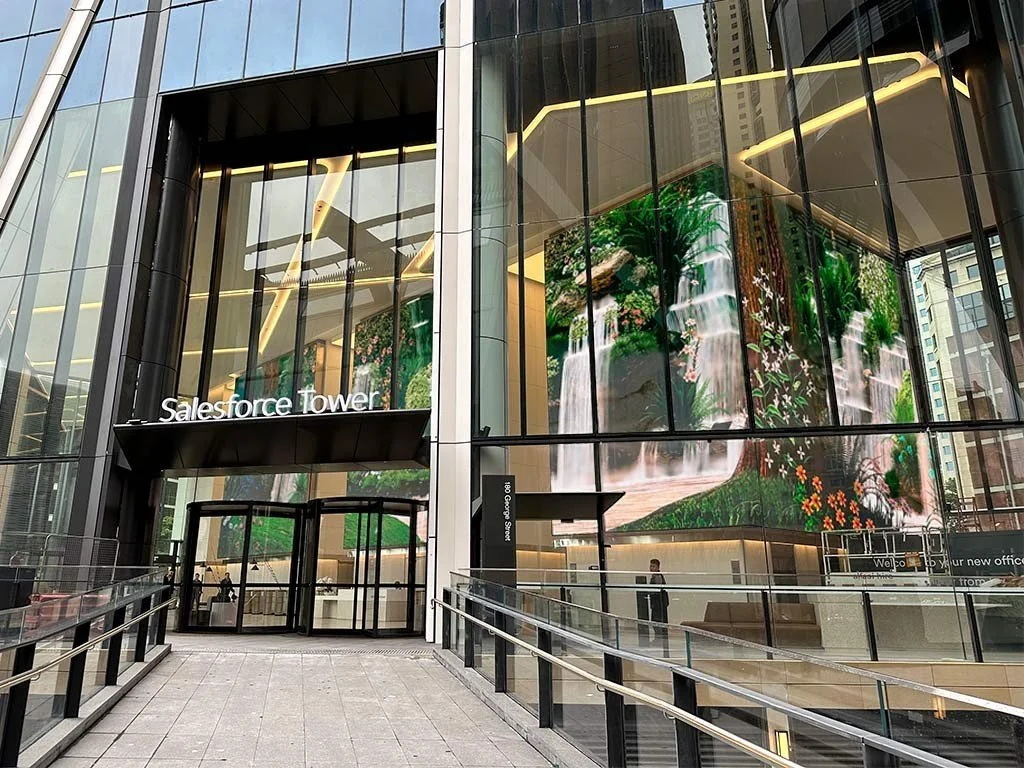Black Rectangles: 6 Ways to Maximize Engagement and ROI with Your Lobby Video Screens
Black Rectangles: 6 Ways to Maximize Engagement and ROI with Your Lobby Video Screens
Original Premise - Lead with Experience (Content) not just AV/IT:
Back in 2019, I wrote the original Black Rectangles article after years leading strategy at Obscura Digital, one of the world’s top immersive content studios. The core idea was simple: LED walls shouldn’t be treated like equipment. They’re experiential platforms for placemaking, storytelling, and brand identity for spaces. You can spec the best screen on the market, with the latest bells and whistles, and call it “futureproof”, but if there’s no content strategy behind it, it’s just a black rectangle with potential. It’s the content experience that gets noticed, drives engagement, and delivers lasting value. Without that, even the most advanced display fades into the background.
What the "Black Rectangles" Represent:
Dead space: Screens that are blank, static, or looping outdated visuals
Wasted infrastructure: Billions spent on displays with little or no proven ROI
Missed potential: No emotional, sensory, digital integration, or branded connection
Silent surfaces: Screens aren’t speaking to people, visually, emotionally, or interactively
Every Screen is an Opportunity for ROI
How We Got Here: 2014 - 2019
At the time, most LED video wall installations were still treated as one-offs—standalone projects with limited strategy, content planning, or long-term vision. Riding high on the viral success of our award-winning 2016 Salesforce Waterfall, it was easy to feel that a single moment of digital magic was enough. It drove millions of views, became a San Francisco tour bus attraction, and made that lobby a global benchmark for immersive design (leading to the phone call that got Obscura acquired by Madison Square Garden).
But these kinds of projects were still the exception. Many video screen projects were driven by digital signage vendors with no focus on experience or aesthetics, or by DOOH agencies applying linear ad logic to public space. Others were led by experimental creatives or burning man types, or architects who saw screens as a nice visual add-on .. an amenity, not a content-driven platform. Some of the results looked great. But most weren’t scalable, reliable, or designed to evolve after "day one."
The Shift Is Real
Today, the landscape is different. We now have the frameworks, tools, creative workflows, and ecosystem maturity to build video walls as living, immersive platforms, not just tech stunts or decorative media. But only if we lead with experience, not tech specs.
The original five tips still hold, with a few key upgrades, and one critical new addition. Read on for all six.
The Problem
In airports, lobbies, hospitals, and public spaces across the globe, black rectangles take up a lot of sensory attention (i.e. visually huge digital screens), and yet are underperforming.
Yes, there is content present on most of these screens. But too often it’s one-off, off-brand, poorly formatted, irrelevant, or simply not memorable or considered as an asset. Most of it lacks ROI, resonance, and reason.
Read on to learn about the six core principles to apply when turning video walls into vital brand touchpoints.
Easy to Implement Nature Subscription Programming Instantly Ups The Game in Your Lobby across CBRE Mixed Use Lobbies
The Short Term Fix
It is important to understand that all of these lobby screens have the potential to be immersive, interactive, site-specific experiences, and therefore, not dead-end displays.
If you have a video wall, even without a long-term strategy or clear budget, it’s smart to focus on the present and start gaining value and insights now.
Ask: What experiences can make this place better today? How can I better inform tenants, staff, visitors, and guests?
Chances are, you’re already trying to solve for this using other interior design or marketing tools—web, app, print, email, kiosks. The answer often lies in content that fits the architecture, resonates with the brand or place, and reflects nature, art, or the local culture—while also supporting real-time events, celebrations, and occasions.
Start there. You’ll likely be light years ahead in just a few weeks.
Event Producers Use LED Video Walls to Create Immersive Experiences to Enhance and Support Important Events, Conferences and Trade Shows, Silicon Valley AI Investor Event
6 Ways to Make Every Black Rectangle Count
Updated Content Guidelines for Immersive Digital Displays
Back in 2019, I shared five key principles for successful video wall content. In 2024 and beyond, they still hold—with some refinements, and one critical new addition. Read through all six for a clear path to meaningful ROI.
1. Create Living Interior Design
Treat your video wall as if it were part of the interior design, reflecting a holistic vision for the space. Plan content with attention to user flow, vantage points, lighting, colors, and textures. Since 2023 there have been advances in software programming, making it possible to create multiple modes of dynamic content to create a "living" space that adapts across the day, the season and the year such that the space feels intentional and alive.
2. Introduce Immersive Branding
Your video wall isn’t just décor, it’s a non-linear brand platform. Use it to express organizational values, highlight events, support campaigns, events, or surface public information in a way that feels immersive and alive. Today’s tech enables seamless integration with websites, apps, QR codes, AI, and live data to deepen engagement. When done right, video walls become powerful tools for brand storytelling and public service, as cFire clients like Salesforce and Seattle Children’s Hospital have proven.
3. Bring the Healing Power of Nature and Art Into Places
This isn’t a billboard, it’s something better. Too many screens default to gratuitous visual effects or motion graphics that create sensory pollution without serving the user. Instead, use immersive visuals of nature and art reduce sensory clutter, shift mood, and bring emotional tone into a space. People feel it, physically and mentally, even through a screen. Thoughtful content like this (which is in fact site-specific Art) transforms public areas into destinations. MGM’s 25-screen Spectacle and Salesforce’s global lobbies prove that calming, culturally resonant experiences help attract and retain tenants, guests, and visitors. That’s real ROI.
The Biophilic Power of Nature in the Built Environment Reduces Stress and Increases Focus for Tenants and Guests, Salesforce Lobbies Worldwide
4. Go with a Pro (Who Gets It)
This isn’t just signage; it’s more like architecture, or making a film. Immersive content is both creative craft and systems discipline. It has to be designed holistically, for space, tech, story, and long-term utility.
The problem? It's the old "a man with a hammer thinks of all problems as if they were nails" allegory: Buyers often end up with whatever a particular vendor is selling. Work with an AV/IT integrator, and you’ll get a hardware-led solution with little regard for content. Talk to a server company, and it’ll sound like an IT problem. Hire a one-off artist, and you may get something beautiful, but impossible to scale or maintain. A media agency will treat your wall like a billboard or a "stunt" (whatever that is). None of these players are necessarily experts in creating cohesive, experiential content systems aligned to your needs.
So step back and see it for what it really is: a living platform that demands the right strategy, partners, and plan. There’s no “Coke budget” that gets you a “champagne experience”, but the right strategy and partnerships will deliver lasting value, and get your video walls noticed.
You need a partner who can lead—not just play nice in the sandbox—and who can vet, and manage the many moving parts and solution options (content, CMS, AV/IT, hardware, creative, architecture, internal approvals, training, "day two" operations, and cost-effective content support and update) to get it built right.
5. The Content Pipeline Never Sleeps
Technology is the starting point. Content is the long game. Once the LED walls are in, the next ten years is content. A great screen program evolves year-round: new seasons, new stories, new moments. Plan for a steady stream to keep the experience relevant, emotional, and never stale. A well-designed content program adds attraction, engagement, understanding, and emotional depth to the user experience, and elevates your entire digital content mix.
6. Activate the Rectangle: Use Existing and New Screens as a Flexible Digital Messaging and Marketing Platform
Most large-format digital screens in buildings today, those ominous black rectangles, remain underutilized, or worse, misused. But when properly programmed, these screens can do far more than display beautiful immersive content. They become programmable infrastructure, a flexible, real-time communications and marketing platform that supports property owners, tenants, marketing communications teams, and event producers alike.
Activate all the Screens across Your Locations to Create a Flexible Digital Experience Platform for Real Estate, Architecture and Civic Spaces, One Raffles Quay, Singapore
By now, folks are accustomed to the pace and frequency of time sensitive digital content, so why not provide useful and beautiful instances of this in your lobby or civic spaces -- where your audience already is.
Once a compelling, site-specific visual experience is in place as the default, these screens can be layered with easily managed digital tenant messaging, announcements, seasonal branding, campaign support, event coverage, and live data feeds. This turns sunk Cap X into an ongoing productive media platform.
When thoughtfully integrated with CMS platforms, AV/IT systems, and brand guidelines -- all of which have been quickly evolving during the past 5 years -- this approach generates measurable ROI in multiple ways:
Eyeballs and exposure for messages that would otherwise require email, kiosks, or print, or not have a platform at all.
Sales and demand generation by supporting launches, on-premise F&B demand, and activations right where people are.
Operational savings by reducing the cost, waste, and inconsistency of substitute communications, and easy integration by extending your existing digital systems.
Enhanced experience by blending practical/logical messaging with immersive, aesthetic content, which can now be matched as a living extension the architecture and the brand.
And don’t stop there. Today’s screens can integrate with QR codes, APIs, RFID, Bluetooth, and conversational AI, bridging physical space with your digital platforms for personalized service and data continuity. Yet in hospitals, hospitality, and retail, many digital leaders still don’t have anyone responsible for the screen experiences. They assume “digital” stops at the app, website, or CRM. But the lobby, the waiting area, the hallway -- these are places where your patients, guests, and shoppers are walking or waiting, anticipating, wondering, and deciding, sometimes with big decisions or worries on their minds. That’s where digital touchpoints should -- and now must -- come alive.
Every screen is a potential part of a living content network, responsive, layered, seemingly sentient, and on-brand.
cFire x Salesforce Towers Scales Worldwide: A Standardized Spatial Content Platforms Across Lobbies Worldwide is a Brand Force Multiplier, Salesforce Tower, Sydney, Australia
Final Thought – Make Every Black Rectangle Count
Don’t let your screens go dark—or worse, be mediocre. Whether you're activating your first lobby display or scaling a full content ecosystem, it’s time to act: make every black rectangle count.
Build a simple, intentional plan. Activate what you already have. Keep the content immersive, site-specific, and constantly refreshed.
The stakes are high, and the opportunity is fast. The global video wall market surged to $24.3 B in 2024, is expected to reach $27.8 B by 2025, and is on track to hit $52.7 B by 2030 (CAGR ~13.8%). This growth is driven by demand for immersive, interactive, and smarter-screen infrastructure.
Immersive, well-managed content does more than look good, it engages people, amplifies communication, and drives ROI.
Let’s make every one of those black rectangles count!






